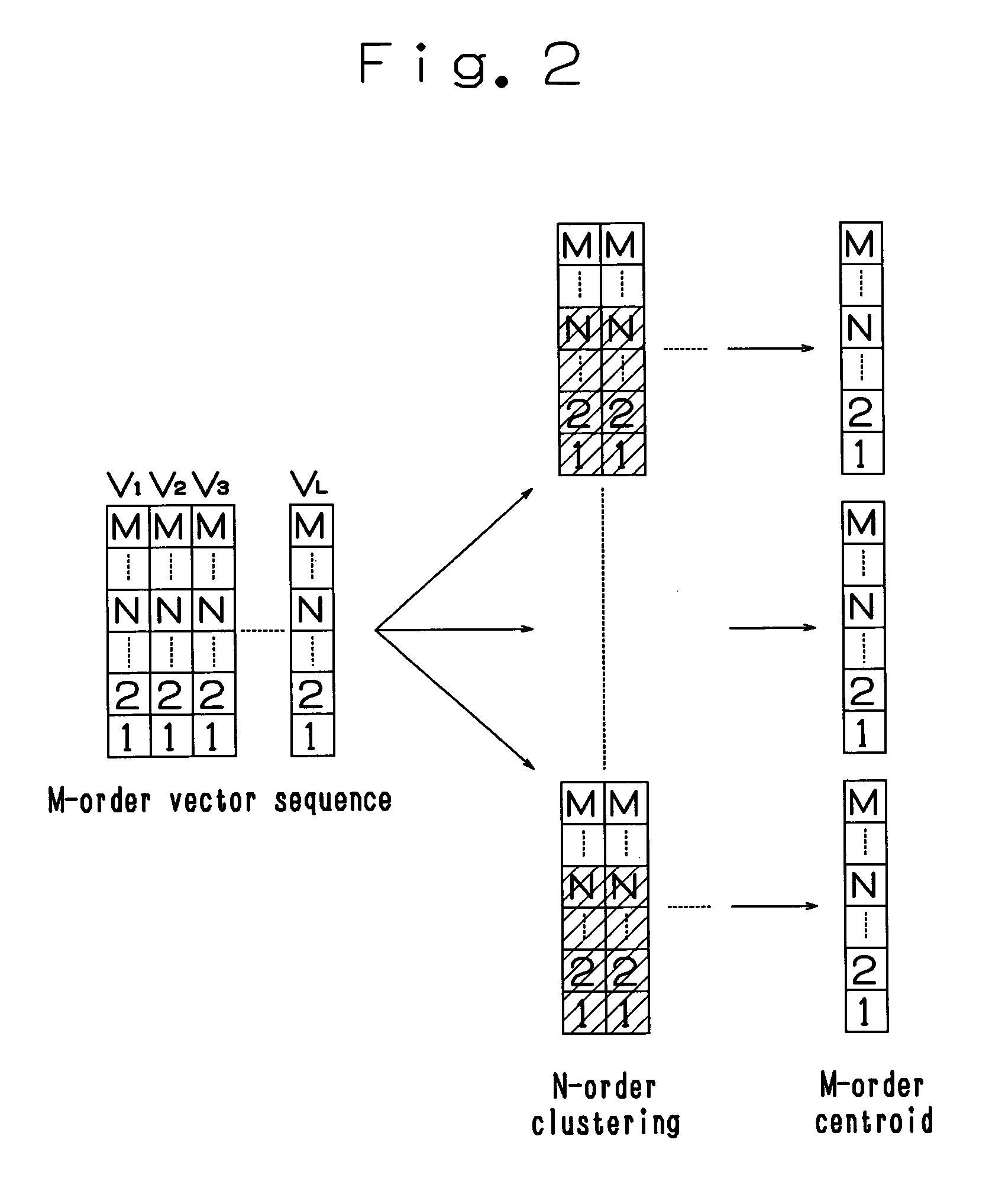Speaker recognition apparatus and speaker recognition method to eliminate a trade-off relationship between phonological resolving performance and speaker resolving performance
a speaker recognition and phonological resolving technology, applied in speech recognition, speech analysis, instruments, etc., can solve problems such as the problem of a trade-off relationship and the problem of setting the order of voice feature vectors
- Summary
- Abstract
- Description
- Claims
- Application Information
AI Technical Summary
Benefits of technology
Problems solved by technology
Method used
Image
Examples
first embodiment
[0040]According to the present invention, in the registration mode, the vector to vector distance of each voice feature vector D1 can be obtained by using N-order vector element in the M-order voice feature vector sequence produced from a voice of the speaker to be registered in the registration mode. The M-order voice feature vector sequence is clustered based on the vector distance D1, and the codebook made up of plural M-order centroids is produced. In addition, in the identification mode, each voice feature vector of the M-order voice feature vector sequence is quantized based on the quantization distance D2 between each M-order voice feature vector produced from a voice of the speaker to be recognized and the N-order vector element of each representative vector of the codebook, the distortion distance D3 using the M-order vector element is obtained, and speaker recognition is executed based on the average value of the quantization distortions. With the above structure, a trade-...
second embodiment
[0044]The speaker model production part 6 will be explained with reference to FIG. 2. The speaker model production part 6 clusters a M-order voice feature vector sequence, which is produced from a voice of the speaker to be registered at the feature vector production part 4 in the registration mode, into a number of clusters corresponding to a predetermined codebook size, obtains a centroid as a weighted center of each cluster to make the centroid a representative vector for the cluster, and registers a plurality of representative vectors to the storage section (dictionary) 7 as a codebook. The codebook is produced for each registered speaker.
[0045]Here, the clustering is executed by using the M-order voice feature vector sequence, and the representative vector is obtained in M-order. The weighted vector distance D1 between the vectors used at the clustering can be obtained from the following formula (4). In this embodiment, N=8, M=16 and the codebook size is 32.
[0046]D1=[∑k=1MU...
PUM
 Login to View More
Login to View More Abstract
Description
Claims
Application Information
 Login to View More
Login to View More - R&D
- Intellectual Property
- Life Sciences
- Materials
- Tech Scout
- Unparalleled Data Quality
- Higher Quality Content
- 60% Fewer Hallucinations
Browse by: Latest US Patents, China's latest patents, Technical Efficacy Thesaurus, Application Domain, Technology Topic, Popular Technical Reports.
© 2025 PatSnap. All rights reserved.Legal|Privacy policy|Modern Slavery Act Transparency Statement|Sitemap|About US| Contact US: help@patsnap.com



